30 y/o Gay Cub( He/ Him) exploring folkloric, traditional and bioregional animism practices in the Blue Ridge Mountains and Piedmont of Virginia & North Carolina
Don't wanna be here? Send us removal request.
Text
In honor of vulture awareness day, let me ask you a question.
Do you love vultures?
You should.
Here’s why:
1, They are simultaneously the most majestic, and the most f*cking derpy of birbs. Observe -




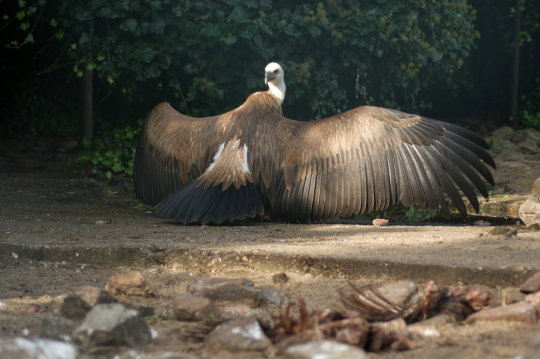
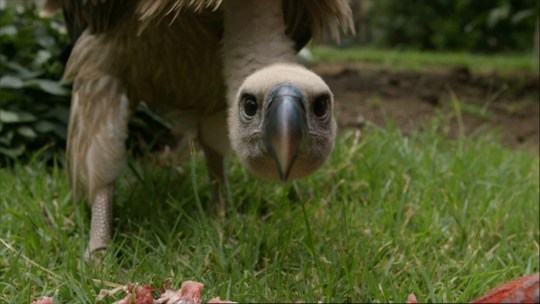
2. THEY’RE SO FUCKING BADASS. We all know that they eat dead things. Eww, right? Wrong. They’re capable of digesting fucking rabies, cholera, hundreds of strains of bacteria that would straight up kill your ass given the chance. They deserve ALL of the respect, but they don’t get any, because ‘eww they eat dead things’.
3. THEY ARE FUCKING AMAZING AT WHAT THEY DO - Some of the highest flying birds ever recorded, with amazing eyesight and smell. Vultures are highly specialised - yes, that means they sometimes have bald heads. So what? People are all over sphinx cats and those semi-hairless dogs.
4. If you think they’re ugly, well, look at these precious babs and tell me you still don’t feel anything:
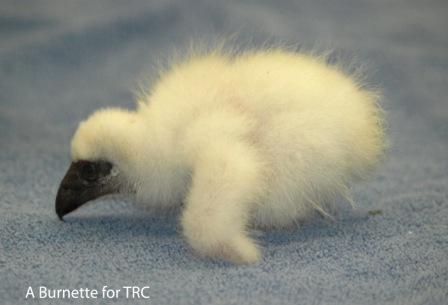


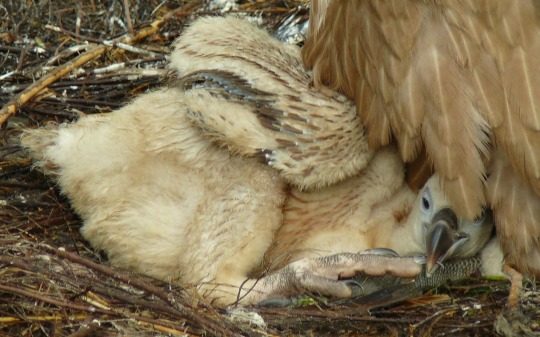
I have more reasons, but, look, I’ll just get straight to the point:
THEY’RE GOING EXTINCT, AND MORE PEOPLE NEED TO KNOW.
Populations of some vultures have fallen more than 90% in the last 20 years, and that’s scary as fuck. Reasons for this range from livestock carcasses being contaminated with certain drugs, to poachers killing them off because vultures give them away. But whatever the reasons, they’re dying off fast, and we need to act before it’s too late. We need to help protect them and conserve them as much if not more than some of the ‘cuter’ endangered creatures.
So what can you do? Here are some useful links if you want to learn more:
http://www.rspb.org.uk/joinandhelp/donations/campaigns/vultures/
http://www.hawk-conservancy.org/Documents/HCT_IVP_leaflet_2013_E_ver.pdf
https://www.justgiving.com/fundraising/africanvultures
http://www.tusk.org/vulture-conservation-project
http://www.save-vultures.org/
http://www.birdlife.org/europe-and-central-asia/news/international-vulture-awareness-day-%E2%80%93-no-cause-celebration
http://www.vulpro.com/
https://tristatebird.org/adoptavulture/
https://webcamvultures.wordpress.com/adopt-a-vulture/
http://www.wwfpak.org/species/Vulture.php
Please consider helping our seldom appreciated vulture buddies, either by donating, or even just by helping to change their bad reputation!!
They really are amazing birds ~ thank you for sticking with my long-ass post
:P
44K notes
·
View notes
Text
Reblog if
You dig chunky dudes. Or are, in fact, a chunky dude.
1K notes
·
View notes
Text
Saving all of this for later.
Quick idea I had and need to note down before I forget it:
a witch bottle designed not to harm the incoming energies (like most witch bottles seem to be with their nails, thorns and black pepper) or block them (like the protective witch bottles I’ve seen with rosemary and basil), but filter and transmute.
Somebody throwing bad luck at you? Great, you’re giving me energy, I’ll filter it and change it into a blessing.
“When life gives you lemons” sort of idea, inspired by a post I’ve seen floating around about that witches shouldn’t ground bad energy, but filter it and transmute it, because earth can only take so much negative.
13K notes
·
View notes
Text
I once wandered up to a stranger in a Marshall’s or similar store when I was a child and told them “no ‘moking” aka No Smoking back in the days when retail stores had a smokers section.
I also at the age of three or four looked at the TV and said “ I am tired of the Iraqi news” during the First Gulf War.
Dress up was my favorite game so it’s no wonder that I ended up getting a degree is costume design. I’d often reenact Disney films. Little Mermaid and Aladdin were highly in repertory. I even remember feeling so left out at recess that I was on top of the fort structure ( which reminded me of Aladdin’s hide out) and sang the One Step Reprise to myself. I wasn’t dramatic at all...

i love little kids with very niche interests. Like for awhile I nannied for a family who had a little girl who loved old black and white movies. She adopted a transatlantic accent, constantly wore a long string of plastic pearls, and would often dramatically drape herself over pieces of furniture when told to do something and say “I just can’t do it babe”
222K notes
·
View notes
Photo

Just finished laying out this awesome labyrinth/ troy maze to carve into my tarot card box’s top (An up-cycled wooden box that I saved from one of the Thanksgiving pecan pies) Since #januarywitch Day 18 is symbol I thought this would be a great example of a symbol from my practice. The idea behind this project is that after I carve the unicursal labyrinth pattern the box will be able to function similarly to the Troy Stone mentioned by Gemma Gary in Traditional Witchcraft: A Cornish Book of Ways, and as a meditation tool. A similar pattern is featured on the ring I wear daily. It reminds me of my commitment to spiritual development and personal inner growth. #gaywitch #gaywitchesofinstagram https://www.instagram.com/p/Bsw4aeQH3jE/?utm_source=ig_tumblr_share&igshid=1xnwbmuuwzrlg
4 notes
·
View notes
Photo
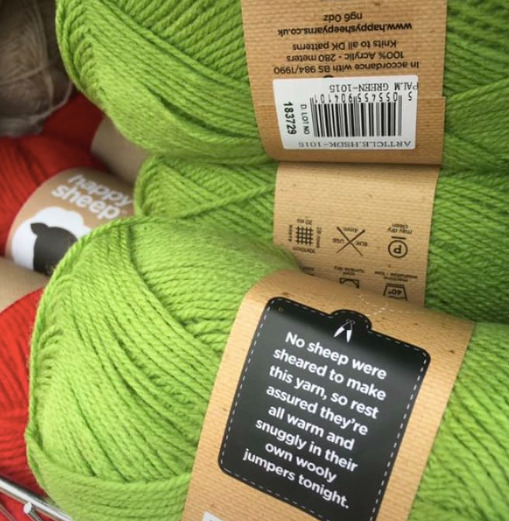
This fake yarn is supposedly better for sheep.
Aimed at people who don’t know where wool comes from, it’s 100% plastic. Yes, plastic.
So any garment you wash will release microfibres into the sea. It’ll never decompose.
You’re supposed to believe that sheep shearing is violent and cruel. There are imbeciles out there that work in an unprofessional manner while shearing, but that’s not the case overall.
Sheep don’t suffer from having their fleece removed.
Left on, the fleece can become a home for fly eggs and the subsequent maggots which can eat the sheep. Chemical treatments are available to prevent that happening. It’s much better for the sheep, the land and the farmer to avoid chemical use.
Don’t be fooled. Wool is a sustainable material, one we should make more and better use of.
198K notes
·
View notes
Photo
I have seen this scientist speak at a conference and he is incredible.






Geologist Andrés Ruzo first heard about the boiling river as child, but it was always thought of as mythical. It was considered “a place of spirits.” But when Ruzo’s aunt insisted a boiling river existed in Peru, he set out to find it. Now, Ruzo is the first scientist to be given the blessing of the local shaman to study the boiling river. Ruzo talks about the mysterious nature of the boiling river on the latest episode of the TED Radio Hour.
17K notes
·
View notes
Photo



Upchuck the black vulture (Chuck for short). Happy Halloween!
60K notes
·
View notes
Text

This is my cat, Brigitte.
24 hours after I brought her home, I got a mindblowing job offer. Since I adopted her nine years ago, my life has become an amusement park. She has brought me good luck ever since I took her into my home.
I’m telling you, there’s something about this animal. Good fortune follows her everywhere.
I don’t want to be selfish. I have everything I need and then some. So, I’m sharing her with you.
Reblog Brigitte and you’ll receive fantastic news in the next 24 hours.
And when you do, please remember to help your local SPCA and support them in the difficult work they do for wonder animals like Brigitte. Any donation helps your SPCA, even if it’s just five bucks.
Kitties like Brigitte are counting on you to give back when they bring you good luck.
Thanks, and congratulations on your good news!
86K notes
·
View notes
Text
no song will ever sound like home more than “concerning hobbits”
9K notes
·
View notes
Photo

Daily Tarot Draw for Monday 11/19. Four of Wands. This was a card I needed to see today. As we head into a week of family gathering the anxiety of facing questions about my professional live is gearing up. The never ending line of questions: “How is the job search going?”, “ What are you doing these day?”, “Are you still teaching?” Or “ Why aren’t you teaching this year?” had me in a funk this morning and just in a blah mood. This card reminds me to celebrate small achievements: - Landing an interview even if I didn’t get the job. -Being an appreciated volunteer for watershed education events and teaching others to care for nature. -Serving as a board member for a growing state EE non-profit. It reminds me to celebrate how far I have come. To cherish what I do have and reflect on what IS going well and most of all to be grateful and thankful which I so often forget to do. https://www.instagram.com/p/BqX2QiLndj0/?utm_source=ig_tumblr_share&igshid=mm8gcnws32w9
2 notes
·
View notes
Photo

A few of my daily practices summed up in a photo. A cup of tea at hand while doing a daily tarot reading for myself. Always by candle and morning sunlight. Today’s reading is a modified Past/Present/Future Spread with two extra cards. One representing a challenge that has roots in the past ( Two of Swords) and the other advice for the present to reach the future ( Seven of Pentacles) https://www.instagram.com/p/BqSO9WjnErI/?utm_source=ig_tumblr_share&igshid=fgfsu5sgplam
1 note
·
View note
Text
So You Want to Do Some Esoteric Research?
Researching a topic thoroughly can be frustrating and daunting for beginners – especially for “odd” or “difficult-to-find” topics like ancient polytheistic practices or occult materials. Where do you even begin? How do you know which research to use? If you’ve never had to sit down to find material without guidance before, research can often feel like it’s over before you’ve even started.
In order to help as many people as possible, I’m going to assume readers have no previous background in academia. While I do assume that you’re interested in a topic, I am going to write as if a middle school research paper was the last research you conducted (and if so, lucky you!). Should certain steps seem obvious to you – or a waste of time – please feel free to disregard them or skip over them. Tips and tricks for more experienced researchers are included at the bottom.
Decide who is an expert in the field. The first thing you’ll want to do is perform a preliminary Google search about your topic. Your best bet is to include the keywords “author” or “book” – otherwise, you’ll be sorting through personal blog posts by Lady Voodoo Witch and resurrected glittery Angelfire pages from 2001. Sort through blogs, forums, and personal pages to see the names that come up regularly, and what value people attach to those writers. A lot of people will warn readers away from certain authors; it’s your job to find out why they’re considered bad. Historical inaccuracy, a missing bibliography, and misinformation should automatically cancel a book’s potential for a beginner in the field. See if you’re alright with reading through condescending tones, shaky citations, or questionable ethics from the writers. Opinions on the relevancy of a work based on those factors vary from reader to reader, bearing in mind not all of your reading will be fun or easy. One or two authors (or resource pages) exist in every field that nearly everyone can agree on as a suitable introduction to your chosen topic – find them and use them.
If your “expert” has written a blog or done an interview, chances are they have made resource recommendations at some point. Using their name and the keyword “recommendation” in a basic search should net you results. If they have published work, the first thing to do is dive into their bibliography. See which sources are cited over and over again. Authors lean heavily on works that inspire them – if you can figure out which ones, that’s an excellent start to a list of trustworthy authors.
Be careful with your first book. We’re all creatures of habit, and once we learn information, it can be very hard to change our minds about it. Once you’ve found a general consensus on good authors, find a work that has a date within twenty years (if possible) and most closely fits your research desires. Books over a few years old can be notoriously out-of-date with current theory (especially if they’re science texts – keep that in mind for magic related to medicine!). Usually, if it’s a point worth discussing there will be consistent revision and reaffirmation of scholastic theories. If no books exist that fit both the date criteria and the relevance criteria, choose the most relevant.
Make notes and/or review the books as you go. Note-taking is a really great idea. As you read, make note of important points, terms, and theories you can expect to find again. If you’re not keen on school-style recitations, then reflect in a journal about what you’re reading. Engaging with your reading is the surest way to retain it, and “active reading” tricks will make the process easier for you. A lot of academics will write reviews after finishing a work – for themselves and others – which can be anything from two to three sentences (“Author long-winded and bibliography out of date. Interesting ideas about the toad bone rite.”) to two to three thousand words. During your bibliography-review stage (below), referring back to these notes or reviews will help you determine an author’s legitimacy.
Crib the bib. Progressing through your reading list, you’ll find you actually start with the bibliography before diving into the content. (That’s how you’ll learn if a book is any good before you waste your time reading it – you’ll see the sources listed, recognize things that illuminate theories or things that were so wrong you spent most of your time wheezing in agony or delight through the writing and decide based on the quality of the resources.) When you’re first starting out on a topic, you should just pick out topics that sound interesting to you based on the title and the footnotes. As you progress, you’ll notice certain titles being praised as “classics” and/or being used repeatedly by authors you admire. Regardless if they are outdated, plan to read them.
Lather, rinse, repeat. Honestly, research can be a lifelong process, especially as new material with groundbreaking revelations is released. As you get more comfortable with research, you’ll learn at a glance which theories or authors are worth reading and which are not worth wasting your time over.
Tips and tricks:
Primary-source citations are gold. My momma always told me, “Ain’t nothing new under the sun.” Even a book about Neowicca has to derive its opinions from somewhere. If a resource doesn’t even mention that the author eyeballed a primary source, it is at most a 101 text if not utter trash. In the beginning, this will be fine; by the time you’re two to three months into dedicated, heavy research you will want to scream.
Learn about the foundations. This goes along with primary resources, but if you’re hoping to learn more about historic primary sources pay attention to the objects that contain them. For example, most Irish mythology stories were written down by monks. Knowing which manuscripts contain which stories – and which version the author is trying to cite – can change your understanding of the information being handed to you. Certain understandings can also come from archaeological finds, including gravestones, cave paintings, etc. If an author doesn’t even try to attribute these sorts of things to their archaeological provenance, burn the book and blow the ash directly into the author’s eyes (to quote Thorraborinn).
Learn the language. The least amount of secondhand filter you take in during your later stages of research, the better. Academic writing usually occurs in English, French, German, and/or Italian – as well as the modern version of whatever language was spoken locally. For the purposes of perusing academia in one of those languages, you should just know basic keywords and google the rest. It will take some time, but that’s what most college professors do. However, if you know you’ll be reading a lot of ancient Irish mythology, it behooves you to attempt to learn ancient Irish! Even a little bit of knowledge of the language can change its meaning entirely. (Don’t believe me? Research ancient Irish indefinite articles and then read the story about Oengus tricking the Dagda out of his house. Makes a lot more sense how that could happen with only that small piece of information.) Learning a language – especially an ancient one – is tough, but each step can reveal a new piece of the puzzle to you. At least try.
It is better to build an educated foundation upon which to rest anecdotes. Honestly, you should try to switch over from 101 materials to meaty materials as soon as possible. Putting academic works over works written by other witches and pagans will save you time; it’s what you can glean from older works and academia that will inform you. You can add in other’s more anecdotal and less academic work once you gain a working mastery of the material, determining how best to align the secondhand works to your own needs. Books that are not well-researched can often provide reference material for your own practical applications, so long as you keep a critical eye on what you’re consuming. (Don’t buy into something wholesale without reviewing it first.)
There is no shame in not knowing. Honestly, it’s best during this process if you remember that there are some things you’re just never going to know. Can you ever create a perfect replica of certain elements? Oftentimes, you’ll never know exactly what you’re even looking to replicate. Aim to be better than yesterday and be alright with repeating, “I don’t know.”
Keep an eye on academic reviews. Even if you can’t see the material you’re looking for at first, academic reviews can let slip big-picture ideas and offer critiques on the material you’ll be handling.
GoogleScholar and your local university library is your friend. Sometimes you can pay a small fee to access the university’s databases!
Try to figure out SEO and keywords for online research.
Still confused? Local community colleges will offer classes on research. Alternatively, there may be some classes on how to conduct research on sites like Udemy.
Research seems like an impossible task only the most intelligent members of the community can pull off, but I promise it’s much easier than you think. I worked at Trinity College Dublin. When I started, I didn’t know what to expect, but I quickly realized most research is about double- and triple-checking the sources and making sure you’re finding new and innovative ideas. Don’t be afraid to get out there and look through whatever you can find! The more you work at it, the better you’ll become at figuring out what materials are good and which materials are better off left out of your work.
Pulled from my former WordPress. Originally published 24 Aug 2018.
207 notes
·
View notes
Text
Witchcraft is a Skill
From the perspective of a Traditional Witch, witchcraft is not necessarily a religion. (This can break down into a conversation about what is and is not considered a religion, but let’s not go there.)
Witchcraft is a craft. It’s right there in the name. Weaving, woodworking, witchcraft - all skills that can be taught. And like all the crafts of old, it has its patron saints and deities. Saint Anthony for butchers, Saint Honoratus for bakers, Saint Ambrose for candlestick makers.
And witches, of course, have the Man in Black, the King and Queen of Faerie, Hecate, and a whole canon of powerful spiritual forces.
And like a craft, witchcraft can be taught. Some people come by it naturally, to be sure, just as some people are naturally skilled at drawing, singing, or dancing. But even those who are naturally skilled can improve their craft through hard work.
Most witches do have to work very hard. If you feel down about your craft, remember that it is just that - a craft that must be honed - so keep working at it!
890 notes
·
View notes
Note
Can you talk a bit about Southern folk magic? What's that like? How'd you learn it? What makes it distinctly Southern?
@erynn-lafae First, I’m so sorry it’s taken me so long to get back to you! I was so excited for this ask, but life just got in the way. I’m also gonna tag @winebrightruby cause I know she asked me a long time ago and I never really got to discuss it.
So, I’ll start with a little background on the term “Southern Folk Magic.” Obviously, hopefully anyway, the term is to denote regional variations of folk magic practiced in the US South. That said, I use it as an umbrella term for the practices that happen Down South because there are TONS. We tend to talk about the South as a whole, but what many folks from outside the region don’t seem to realize is just how much diversity there is down here. Like I mentioned here, there are tons of subregions in the South and just as our food, accents, and dialects are different, so can our magical practices be. My personal experiences have been in Memphis/Mississippi Delta/North Mississippi and Knoxville/East Tennessee/Southern Appalachia. I’ll be addin Atlanta and hopefully North Georgia to that list soon, but not quite yet.

For those not from the Delta region, Memphis is often jokingly referred to as “the capitol of Mississippi.” This is largely cultural and demographic and I’ve long said “Memphis will always be more Mississippi than it’s ever been Tennessee.” And the older I get, the more true that seems to be. According to the 2010 census, Mississippi has a 37% Black population. It has also seen the largest increase in people reporting to be of “mixed race.” Memphis has a 61% Black population, with many of these folks bein the direct descendants of freed slaves who moved out of the rural South and into a city. And in West Tennessee, which runs from the Western border of the state to the western bifurcation of the Tennessee river and represented by the far left star on our state flag, even small towns often have 30%+ Black populations whereas Knoxville, the largest city in East Tennessee, only has a 13% Black population. So the folk magic I grew up around in Memphis is largely influenced by Black folks whereas East Tennessee Appalachian folk magic is much more influenced by Cherokee and Scots-Irish practices.
So, when I moved to Knoxville for college, it was absolute culture shock. I wasn’t actively or knowingly practicing magic at that point, but the foundations had been laid. I got a blue doormat for the front door because that’s what you do. Now I realize this comes from a West African idea that harmful spirits can’t cross water and the blue doormat (or painting the underside of your porch roof) will hopefully confuse em. I’ve since learned this is common in Carolina Lowcountry from the Gullah-Geechee people, so I’m not sure the exact lineage of me learnin it, but it’s somethin I still do. Little things like this abound and I honestly only think about it when I find myself doin one of em.

Another tradition I grew up around is water-witchin water dowsing. The first time I heard the term as a kid, I was confused, but both of my grandparents on my daddy’s side could do it and it basically involves balancin a forked stick and when it drops, that’s where you dig your well. Other people use 2 sticks or metal rods and wait for em to cross. Either way, it seems to work.

I also wear a dime on a red string on my right ankle for good luck and to avert “the evil eye.” This is somethin a childhood friend’s grandmother made for me the first time sayin, “honey, you just need it.” And I think she was right. This is a practice that, from what I’ve read, also comes from African tradition, but specifically what or where has been all over West Africa. But the red string also carries over into Irish lore on good luck and as a Gaelic Polytheist, it makes a perfect blend of practices for me. There’s also what I feel like is a broder American tradition that comes to us likely from the Irish of hangin a horseshoe above the door. Modern folklore says to hang it points up so that the “luck doesn’t run out,” but it also seems to do have to do with the idea that horseshoes are traditionally iron and the fae don’t like iron. In East Tennessee, it’s not unheard of to see a tree with ribbons or scraps tied to it. The type of tree varies, but the idea is similar to Buddhist prayer flags (for a more recognized practice) and seems to come from the Gaels that settled in the area. But over heard people say it has Indigenous ties, too. How much of that is true and how much is “Cherokee Princess Syndrome” as I like to call it, I just don’t know. That’s one thing about bein down here; we’ve created a string cultural identity that, regardless of how it happened, mashed cultural practices together that there’s just no tellin where some of em exactly come from. And that’s honestly part of what makes it “Southern.” Our culture is an amalgamation of various African cultures, Irish and German immigrants, Acadians, French and Spanish historical colonization and influence, and countless indigenous cultures. If the stories of how that happened weren’t so absolutely mortifying, it could be beautiful, but we’ll always carry the wounds and scars of the past, imo. As for how I learned, it’s been a wild ride. A lot of things I just learned culturally growin up. When you’re “born in the South, given to a town raised on hand to mouth,” a lot of things I’d now qualify as folk Magic are just a part of life. But as I’ve grown and begun intentionally practicing, I’ve read everything I can. Lots of times, this means pickin through charlatans and pseudo-intellectual horseshit. It means often bein VERY wary of other white folks claimin to know anything about anything. I’ve talked to older folks who practice and try to learn what they’re willin to teach. But it’s been a tough road. And that, along with other historical factors, are why I don’t use terms like hoodoo for my practice. I think hoodoo is a form of Southern Folk Magic, but it also has its own specific history and practices ties to the Christianization and slavery of African peoples. I’ve found a lot of similarities in my practices and Hoodoo™, but I also have a much more heavy and specific Irish influence because of bein a Gaelic Polytheist than a lot of other folks. So, as with most topics, it’s incredibly nuanced and I’m sure I’ve left somethin out or even said somethin that wasn’t super clear, so if there are any questions, shoot! And if there are any other folks that practice Southern Folk Magic or Southern-influenced Magic, hit me up! I’d love to hear from y'all cause lord does it feel lonely sometimes. We can pm here, send me asks, hit me up on twitter, or shoot me an email at [email protected].
703 notes
·
View notes
Text
Southern Folklore and the Trouble of Passing Down
This post may not be of much interest to many, but I wanted to make something to point out the difficulty of taking passed down stories and folklore and translating it to usable practice and show why taking notes and conducting experiments with your practice is so necessary. As my example, here’s how to conjure the devil to you (according to Southern folklore):
1. Go to a crossroads of four roads for nine consecutive mornings and on the ninth morning the devil will appear and you must physically fight him and, assuming that he let’s you go, he’ll ask your terms - what you want and for how many years you want on Earth before he comes for you.
2. Go to a crossroads of nine roads for nine Sunday mornings and on the ninth the devil will appear and play music (with you? against you?) and ask what kind of earthly pleasures you want.
3. Go to any public crossroads for nine consecutive mornings with a live black chicken and on the ninth the devil will meet you and teach you anything you want to know.
Now while I have no interest in conjuring the devil at a crossroads I’d have a hard time of it if I was. Although there are some consistent elements - the nine mornings spent at a crossroads - there’s a lot of variation here, and this is a mild example of the kinds of wild variation in folk stories and magic practices. Ask five different individuals and you’ll likely end up with five slightly consistent but quite varied stories. In some instances it can be easy to see the main patterns and pull out the core elements from there, but in many cases it can be impossible to note any kind of consistency when it comes to what you’re actually supposed to do, not to mention all of the details that might be left out intentionally or unintentionally - are there words to speak while at the crossroads? is there a trick to besting the devil physically? is there a better time of morning to conduct this? etc.
These kinds of unanswerable questions mark the moment where the individual practitioner must become a scientist willing to conduct multiple and varied experiments over time, documenting findings until they discover what works. And this is part of what makes witchcraft a practice, an ongoing constant search and series of experiments to locate results and effective methods and means through layers of misinformation and misunderstandings. So, if something isn’t working make note of it and turn to the experiment again.
2K notes
·
View notes







